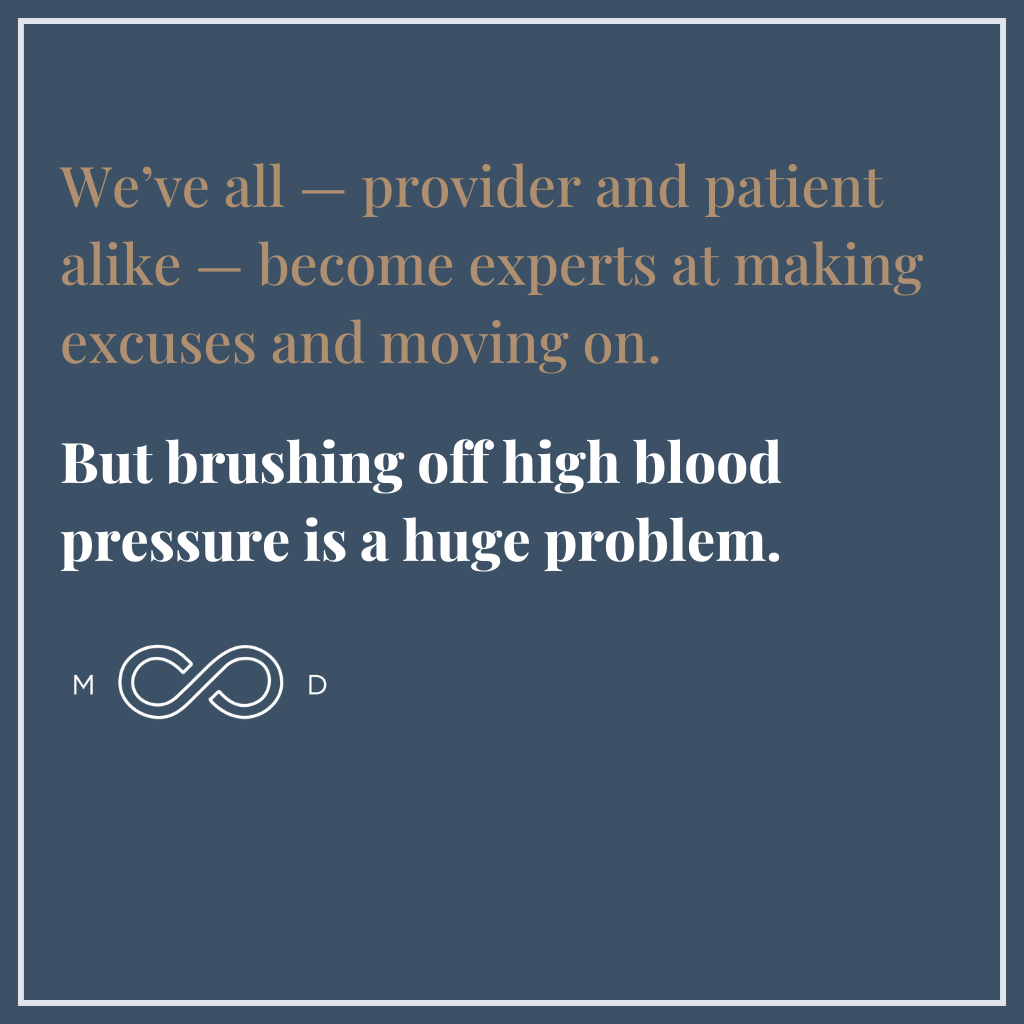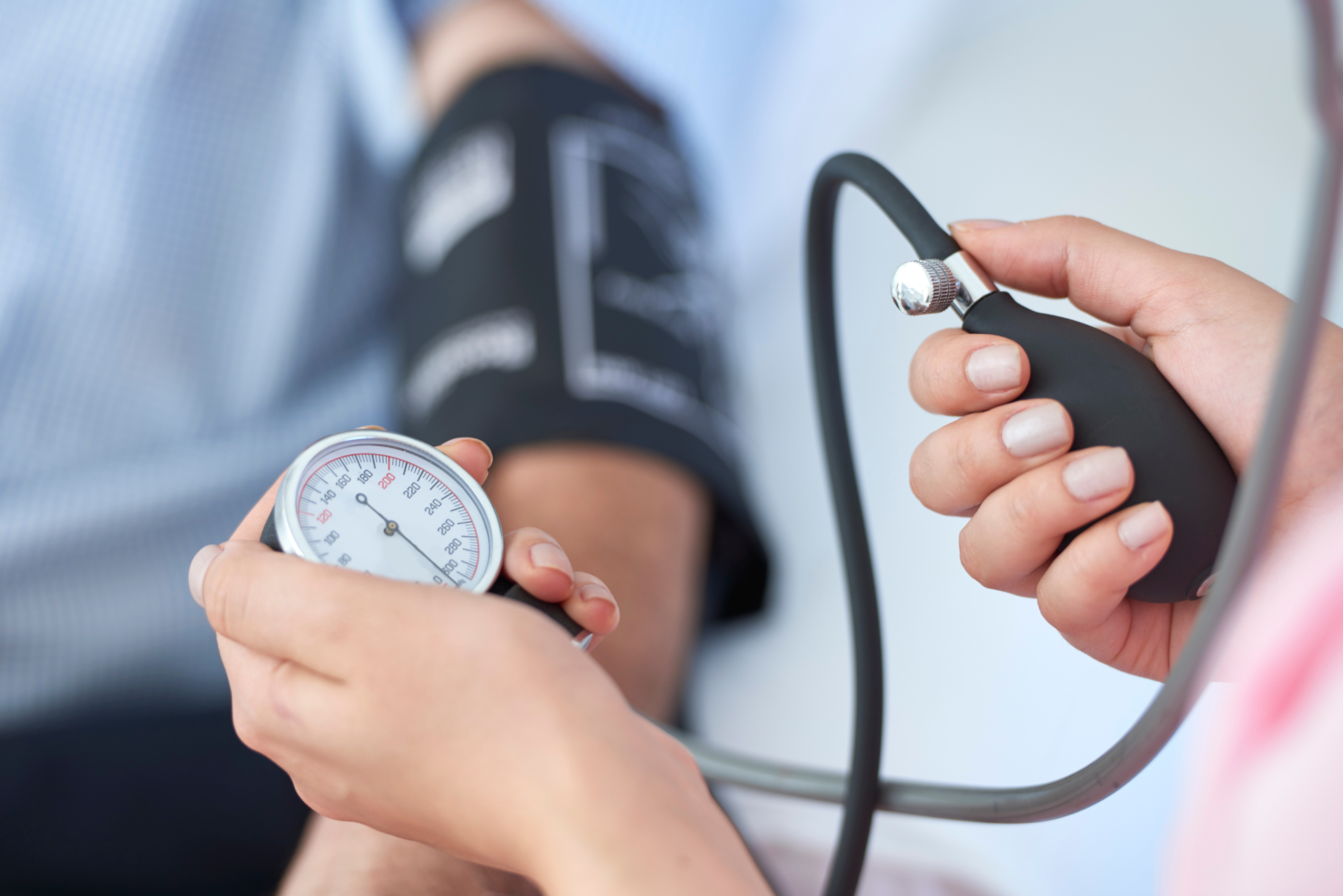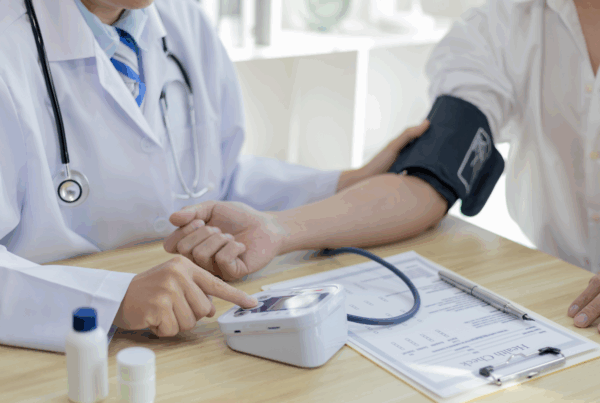High blood pressure can seem like the boogeyman of the health world. We’ve all heard it’s scary, but many of us aren’t so convinced it’s actually lurking in our closet.
Often, we simply don’t believe the warnings. But there’s no refuting that high blood pressure is a foundational risk factor for cardiovascular health. But what is considered high blood pressure, really? Do we actually have it, or was that one reading just a little high?
Let’s find some clarity in the discussion below.
We Need to Talk About BP
High blood pressure can lead to numerous health problems over time. Several of the top killers of humans have hypertension as a root cause, including heart disease, stroke, kidney disease, and certain types of dementia. So why do we have trouble acknowledging it?
From a patient’s perspective, it’s easy to gloss over one or two high blood pressure readings. Maybe you were stuck in traffic on the way to your appointment, or you had a stressful work meeting. All kinds of circumstances can provide useful scapegoats for high blood pressure readings.
From a physician’s perspective, too, high blood pressure can sometimes fly under the radar. We see elevated readings so often that it’s possible to grow complacent about bringing it up with patients, especially if they have plausible reasons for the reading: it was the anxiety of the doctor’s appointment, they just rushed up the stairs, or they had an argument with their spouse. Other times, the patient shares more pressing concerns that need immediate attention, and the blood pressure discussion gets edged out.
We’ve all — provider and patient alike — become experts at making excuses and moving on. But brushing off high blood pressure is a tremendous problem. If we don’t address it, the downstream health problems it causes are serious, possibly deadly. If we don’t stop and acknowledge the problem, we miss out on essential conversations that could lead to prevention, reversal, or treatment.

What Is Considered High Blood Pressure?
So, conversations about blood pressure are important. But exactly what is considered high blood pressure?
If you research this online, you’ll get slightly different answers from various reputable agencies and organizations. So even within the medical realm, thresholds of concern differ.
I recommend that any person with a blood pressure reading above 130/80 have a conversation with their physician. That reading alone doesn’t mean a diagnosis of hypertension, but it does warrant attention and monitoring — and perhaps a discussion about lifestyle changes to avoid eventual true hypertension.
In a high-touch concierge practice like ours, we work from a foundation of proactive intervention. We don’t wait for disease to develop before taking action. Taking action against hypertension allows for early lifestyle changes that prevent its onset and support long-term cardiovascular well-being.
Why Blood Pressure Readings Vary
One reading isn’t enough to diagnose a person with high blood pressure. Why? Because your blood pressure changes throughout the day.
Blood pressure fluctuates based on factors like nutrition, hydration, posture, and stress level. It’s affected by whether you’re lying down to rest, sitting for a meal, or standing and active. Mood affects it too — readings may be higher if you’re anxious versus calm. Readings will be different in the morning versus the afternoon and will change depending on what you’ve had to eat and drink that day.
The bottom line? One data point doesn’t provide the full picture. We need a bird’s-eye view of what’s “normal” for a person to determine whether they have high blood pressure overall.
As a doctor, I can’t check my patients’ blood pressure unless they’re in my office. However, the more data points I have, the better I can make an assessment of their hypertension risk. For this reason, it’s helpful when patients check their own blood pressure at home and share their findings with me.
I’d like to share three tips to help you monitor your blood pressure easily, accurately, and consistently at home.

How to Monitor Your Blood Pressure at Home
Tip #1: Invest in a High-Quality Cuff
To ensure you get accurate readings, invest in a quality blood pressure cuff. I use an arm cuff from a company called Withings, but Omron is also a great brand and is easy to find.
Blood pressure cuffs come in wrist and arm styles, but wrist cuffs tend to produce more inaccuracies for patient monitoring at home. In light of that, I recommend a good upper arm-style cuff, though it’s important to bring whatever monitor you choose to your appointments so your doctor can ensure correct usage and calibration. This is most important to give both you and your doctor confidence in your home readings.
Tip #2: Vary the Timing
Take your blood pressure in the morning one day, afternoon the next, and evening another day. Take it on a weekday and a weekend. Capture different readings in different timeframes and situations.
Tip #3: Note the Context
Since factors like stress, diet, sleep, and activity level affect your blood pressure, be sure to record the context of your readings. Were you up against a big deadline? Were you perfectly calm at home? Did you have a poor night’s sleep? How were your hydration and nutrition? Was it morning or evening?
These notes help your doctor interpret the variations in your readings and establish what circumstances typically contribute to your readings.
Tip #4: Share Results With Your Doctor
Your readings and notes won’t help you practically unless you share them with your doctor. By providing them with this thorough data, you help them provide personalized recommendations based on a full picture rather than just isolated numbers.
Tip #5: Be Consistent
It’s important to make checking your blood pressure part of your regular self-care rhythm. Work with your doctor to decide how frequently you should check your blood pressure. For patients without concern for hypertension, you may only check once or twice a month. However, if the concern is greater, you may be advised to check once or twice a day.
Conclusion
Knowing what is considered high blood pressure, why it matters, and how to watch for it can make an enormous difference in our longevity. By acknowledging the data, we can actively maintain our health as we age.

Dr. Wright joined Brentwood MD in 2022 as the model allows him to spend more time connecting with patients and build a foundation of exceptional care. He is a Nashville native and completed his family medicine residency at the University of Tennessee Health Science Center, where he also served as Chief Resident. He believes that your health deserves a prominent position on your priority list, and would be honored to serve you and your family.






